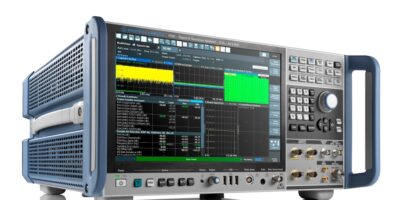Error vector magnitude (EVM) measurement for wideband modulated signals in the mmWave range distinguish the R&S FSW signal and spectrum analyser from Rohde & Schwarz. The company has enhanced the dynamic front end of the instrument which is suitable for testing communication components or systems, including 5G NR (new radio) FR2 or IEEE 802.11ay / ad chipsets, amplifiers, user equipment and base
stations.
The enhanced dynamic front end of the R&S FSW meet demands for EVM measurements for 5G base station and component development at FR2 frequencies as well as for high frequency satellite applications. Accuracy is achieved with the latest enhancements to the modified front end of the R&S FSW, as well as the microwave hardware optimised for frequencies above 26 GHz, says Rohde & Schwarz.
The signal and spectrum analyser has a wide internal analysis bandwidth which allows the characterisation of wideband components and communications systems. Its measurement applications simplify and speed up in-depth analysis of the physical layer, allowing testing at higher frequencies and wider measurement bandwidths to cover all the physical layer options specified in the standard, says Rohde & Schwarz.
Newly produced R&S FSW43, R&S FSW50 and R&S FSW67 models now ship with the enhancements as standard. The R&S FSW-B24U can also be ordered as an upgrade to many R&S FSW signal and spectrum analysers already in use.
The Rohde & Schwarz technology group specialises in test and measurement, technology systems and networks and cybersecurity.
Founded more than 85 years ago, the group is a partner for industry and government customers around the globe.
Rohde & Schwarz is headquartered in Munich, Germany.







